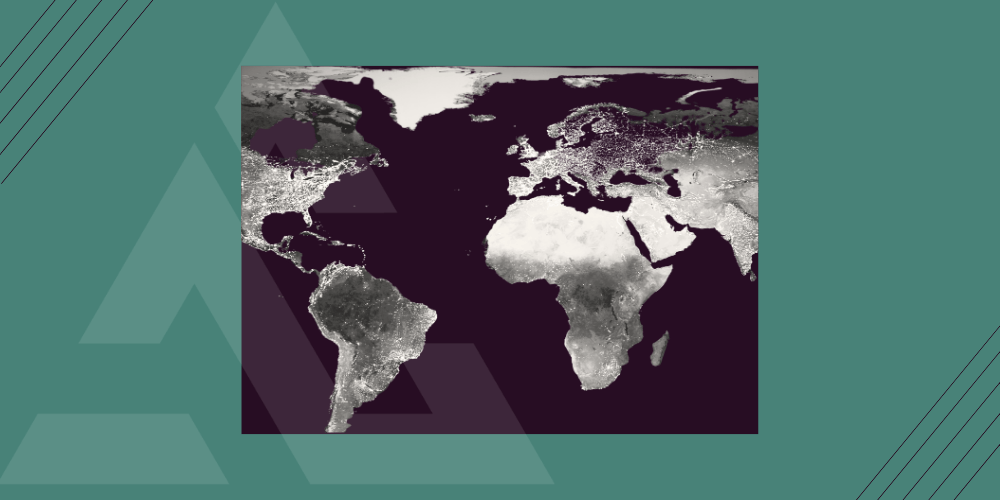The Year in Cross-Border Payments and Correspondent Banking
International wire automation, stablecoins, wallets, and AI reshape global money movement What a pivotal year in cross-border payments. No one...
5 min read
 Daisy Lin, Head of Marketing, Acceleron
:
12/18/24 12:11 PM
Daisy Lin, Head of Marketing, Acceleron
:
12/18/24 12:11 PM

Powerful forces are shaking the foundation of correspondent banking.
While global opportunities for cross-border payments continue to expand, the ability to service these transactions is shrinking due to the persistent challenge of de-risking, where correspondent banks terminate business relationships to avoid risk. Here’s the irony — even as trillions of dollars in international payments flow through the system every year, entire regions like the Pacific Islands faced isolation in 2024 as banks severed ties, leaving them cut off from the global financial network.
At the heart of the year’s developments in correspondent banking are efforts to combat de-risking, harness emerging technologies, and prepare for transformative regulatory milestones like the ISO 20022 compliance deadline. These changes hold significant implications for community banks, which must adapt to thrive in an increasingly complex financial landscape. Here’s a closer look at the recent developments and what lies ahead.
The global payments industry grew 7 percent annually from 2018-2023 and will grow 5% per year over the next few years, bringing in an additional $700 billion of revenue for a total of $3.1 trillion by the end of 2028, according to McKinsey.
In 2024, cross-border payments saw significant innovation worldwide, enhancing speed, efficiency, and connectivity.
For community banks, these advancements highlight opportunities to offer customers faster, more competitive global payment solutions, reinforcing the need to stay informed and invest in modern payment infrastructures.
De-risking, the practice of financial institutions scaling back or terminating correspondent banking relationships (CBRs), dominated the headlines. Large banks, grappling with regulatory pressures and rising compliance costs, reduced their CBRs, impacting smaller institutions and high-risk regions disproportionately.
Impact:
The Response: In response to de-risking’s global consequences, the World Bank approved a $68 million support program for Pacific Island nations. This initiative ensured continued access to cross-border payments even in regions at risk of losing all correspondent banking relationships. For Pacific nations, this means that remittance flows — vital economic lifelines — will be preserved, protecting their economies from further strain.
Additionally, the Pacific Banking Forum, co-hosted by the U.S. and Australia in July, brought stakeholders together to explore solutions that balance the need for regulatory compliance with the imperative of maintaining global financial connectivity. During the forum, Australia pledged additional funding to support banking services in the Pacific, reinforcing its commitment to preserving financial inclusion and stability in the region.
The broader implications of de-risking also resonate with U.S. community banks, which face challenges in maintaining international payment services. These parallels highlight the urgency of building resilience and redundancy into banking operations to mitigate the risks associated with de-risking.
Read our article on the importance of working with multiple correspondent banks to ensure business continuity and cost savings.
In 2024, technological advancements reshaped correspondent banking, addressing longstanding inefficiencies and unlocking new opportunities for banks to streamline their operations. These innovations are particularly significant for community banks and credit unions, offering solutions to challenges that have historically constrained smaller institutions.
Key Innovations:
For community banks and credit unions, embracing these technological advancements is key to earning non-interest income, and with pre-integration into major payment platforms, development work is minimal. To learn more about how correspondent banking technology can transform your institution, check out our article:
One of the most pressing issues for community banks is the upcoming ISO 20022 compliance deadline in November 2025. This global standard for financial messaging will modernize how cross-border payments are processed, replacing outdated systems with a richer, data-driven framework.
What community banks and credit unions need to know:
While the transition to ISO 20022 may present logistical and financial challenges, the long-term benefits far outweigh the initial hurdles. Adopting this standard empowers community banks to compete more effectively in a global marketplace, offering seamless international payment experiences that align with the demands of modern customers. Beyond compliance, ISO 20022 positions banks to harness rich payment data for insights, innovation, and enhanced decision-making. By acting now, community banks not only avoid disruption but also unlock new growth opportunities that solidify their relevance and competitive edge.
As 2025 approaches, correspondent banking is on the brink of significant transformation. The ISO 20022 compliance deadline in November 2025 will dominate strategic planning, with early adopters expected to gain a competitive edge by leveraging the enhanced data capabilities and operational efficiencies the standard offers. Efforts to mitigate de-risking will continue to shape global banking policies, with a focus on ensuring financial inclusion and preserving vital cross-border connections for smaller and vulnerable economies. Meanwhile, technology is set to be a defining factor in the industry's evolution, as regtech and automation play an increasingly critical role in improving compliance, streamlining processes, and addressing longstanding inefficiencies. These trends underscore the need for banks, particularly community banks, to proactively adapt and innovate to remain relevant and competitive in an increasingly interconnected world. Stay updated with breaking developments in correspondent banking on our news updates page.
Acceleron builds patented software that allows community banks and credit unions to conduct international payment transactions profitably through a correspondent banking marketplace. Serving over 200 financial institutions and facilitating more than $1 billion in international payments annually, Acceleron helps small banks generate non-interest income and compete more effectively with high-fee big banks. Our solutions integrate seamlessly with top payments platforms, ensuring quick implementation and smooth operation.
Subscribe to our monthly newsletter, "The Exchange," to stay ahead of the curve and get original content you won't find anywhere else!

International wire automation, stablecoins, wallets, and AI reshape global money movement What a pivotal year in cross-border payments. No one...

New rules, no pennies, and next-generation rails: this month’s biggest banking news As the year winds down, the industry isn’t slowing. The Fed is...

The SVP, Head of Business Development for Service Providers at The Clearing House talks instant payments, bourbon, and fraud. When you talk to...